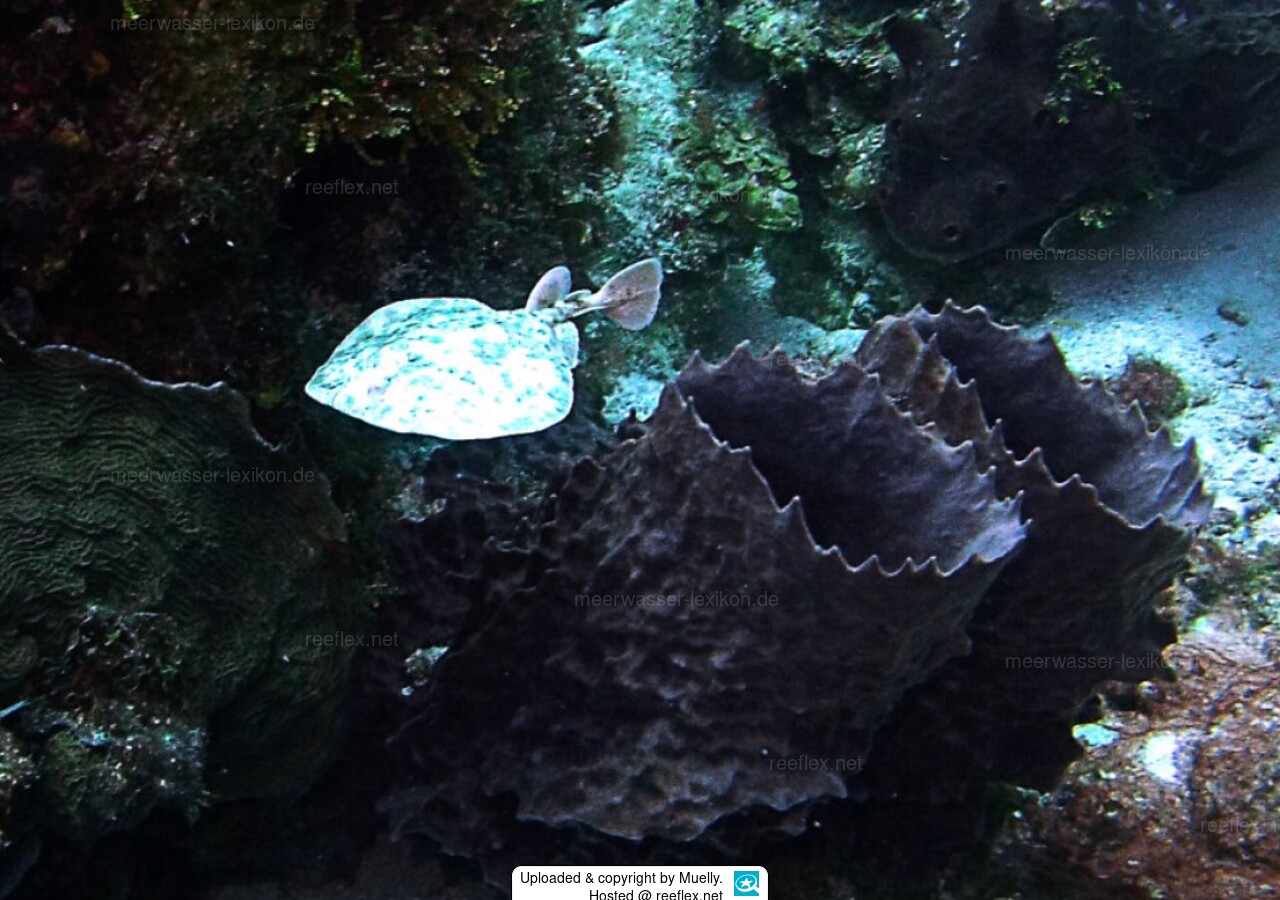Info
Torpedo andersoni Bullis, 1962
Description: Body circular, smooth, wide, straight in front, thick in front and in the middle, thinner at and behind the sides. mouth very short; Eyes very small, with papillae at the edge (more clearly visible in young animals); two large, kidney-shaped electrical organs on the sides of the head; Mouth moderately large, with longitudinal grooves on the sides, lips not cartilaginous and tubular; Pectoral muscles very thick at edges; Tail thick, merging into body, shorter than disc; two dorsal fins, the first is larger, the base of the first dorsal fin does not extend beyond the base of the pelvic fin; caudal fin large, triangular; Skin smooth and spineless.
Upper side of the body light brown to yellowish, with small, irregular reddish-brown spots, the underside cream-colored.
Like other electric rays, Torpedo andersoni is ovoviviparous. The young animals hatch while still inside the mother animal's body. Until hatching, the embryos feed first on the egg yolk, then on a slimy fluid secreted by the uterus that is enriched with fat and proteins.
Benthic on corals to soft bottoms.
Description: Body circular, smooth, wide, straight in front, thick in front and in the middle, thinner at and behind the sides. mouth very short; Eyes very small, with papillae at the edge (more clearly visible in young animals); two large, kidney-shaped electrical organs on the sides of the head; Mouth moderately large, with longitudinal grooves on the sides, lips not cartilaginous and tubular; Pectoral muscles very thick at edges; Tail thick, merging into body, shorter than disc; two dorsal fins, the first is larger, the base of the first dorsal fin does not extend beyond the base of the pelvic fin; caudal fin large, triangular; Skin smooth and spineless.
Upper side of the body light brown to yellowish, with small, irregular reddish-brown spots, the underside cream-colored.
Like other electric rays, Torpedo andersoni is ovoviviparous. The young animals hatch while still inside the mother animal's body. Until hatching, the embryos feed first on the egg yolk, then on a slimy fluid secreted by the uterus that is enriched with fat and proteins.
Benthic on corals to soft bottoms.







 Muelly
Muelly






